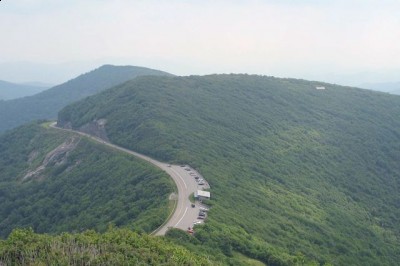
In honor of the 75th anniversary of the Blue Ridge Parkway, a symposium — “Imagining the Blue Ridge Parkway for the 21st Century: History, Scenery, Conservation and Community” — will be held at Appalachian State University on April 22-24.
“The symposium is an opportunity for the Blue Ridge Parkway, neighbors, and visitors to take a look back at where we’ve come from — but more importantly, to think about the future. How can we make sure the Parkway stays relevant for the next 75 years,” says Superintendent Phil Francis.
The Blue Ridge Parkway is the most visited national park unit in the country, attracting almost 16 million visitors in 2009, according to the National Park Service statistics. “But we’ve had as many as 20 millions in the past,” Francis points out. “We need to reconnect with people, especially young people, because they’re the future of the parkway. We need more involvement with our partners — to protect the parkway from the threat — invasive, air quality and declining visitation. Camping is down. Picnicking is declining in some areas. And we get low visitation by children.”
Neva Specht sees the symposium as a chance to present scientific, social, and cultural research about the Parkway in a public venue. And public is the key, says Spect, associate dean of the College of Arts and Sciences at Appalachia State University and chair of the Blue Ridge Parkway symposium committee.
“The symposium will have something for every stakeholder, such as academics, elected officials, general visitors and students. Appalachia State has been connected with the parkway for several years. We think students are really the next stewards for the parkway. By hosting on the university campus, we’ll attract students so they can see what the parkway means to them. In addition to presentations, there’ll be movies, displays, even a 1930s camping demonstration.”
One large group of stakeholders that was left out are hikers. There’s no mention of the Mountains-to-Sea Trail, which follows the parkway from the time it leaves the Smokies until Stone Mountain State Park, more than 300 miles later.
“We’ve been building miles of trail along the parkway as part of North Carolina’s Mountains-to-Sea Trail, and people really enjoy the trails as a way to get out and experience the beauty of the Blue Ridge up close and personal,” says Kate Dixon, executive director of Friends of the MST. “The trails are one of the best features of the Blue Ridge Parkway, and we hope that more and more people will take the time to enjoy them.”
Carolyn Ward of the Blue Ridge Parkway Foundation will present her work on the TRACKS Trail for children (see “Trekking with the Wee Ones,” March 24 Xpress). She describes her program as Dora the Explorer, a cartoon character, meets geocaching. “Park use has been declining, especially for children. This presentation came out of concern about the next 75 years of stewards.” The first such track is at Mile Marker 384 on a trail built by the Carolina Mountain Club. (See www.kidsinparks.com.)
Philip E. Coyle, Professor of Anthropology and Sociology at Appalachian State, has been studying the missing voices on the Parkway. His research shows that “all of the famous Parkway sites were fabricated, including Humpback Rocks Pioneer Farm group, the landscaping at Peaks of Otter, Mabry Mill, and basically every cultural or historical structure on the Parkway. They did it to create visually interesting places for the traveling public to get out and stretch their legs and learn about a particular stereotype or myth concerning mountain people and American history. Places destroyed by the National Park Service are almost too numerous to mention and include the home of Cherokee Jerry Wolfe.”
Specht hopes that the symposium will heighten the visibility of the parkway. “Funding goes to parks that have high profile. We’re all competing for limited resources. Information used here can be used in other parks. Many of the issues faced by the parkway faces are common throughout the country.
For Superintendent Francis, it’s all about stewardship, going back to the original mission of the National Park Service: to preserve and protect the natural and cultural resources. “How we protect the resources is not only the responsibility of the staff,” he emphasizes. “We share that responsibility with the public.”
The first symposium, entitled History, Scenery, Conservation, and Community will be held at Appalachian State University in Boone, NC, on Apr 22-24, 2010. The second symposium, held in Roanoke, Virginia in the fall, will focus more on practical applications. For all details, see blueridgeparkway75.org/events/view/blue_ridge_parkway_75_symposium
Hike leader and outdoors writer Danny Bernstein is the author of Hiking North Carolina’s Blue Ridge Heritage. She can be reached at danny@hikertohiker.com.



Before you comment
The comments section is here to provide a platform for civil dialogue on the issues we face together as a local community. Xpress is committed to offering this platform for all voices, but when the tone of the discussion gets nasty or strays off topic, we believe many people choose not to participate. Xpress editors are determined to moderate comments to ensure a constructive interchange is maintained. All comments judged not to be in keeping with the spirit of civil discourse will be removed and repeat violators will be banned. See here for our terms of service. Thank you for being part of this effort to promote respectful discussion.